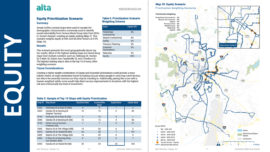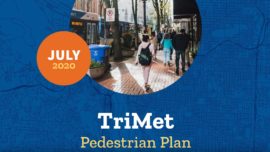Alta employs robust methodologies to identify who benefits from transportation investments and to inform recommendations that reflect the needs of socially vulnerable populations. Our approach identifies populations who face inequities in mobility options and access to opportunity, who are exposed disproportionally to unsafe infrastructure or pollution, and who are burdened by unaffordable housing and transportation costs.
Alta maps demographic information city-wide to understand specific conditions related to low income, minority households, and households without access to a motor vehicle in the study area. This information is used to identify infrastructure improvements and programmatic strategies to support students, families and schools with more limited capacity and resources. It is also used in the prioritization phase to focus resources in areas that have been traditionally less well-served by city infrastructure.







